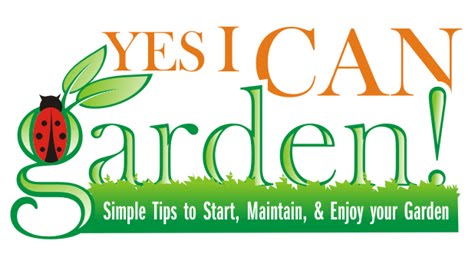
Do a quick analysis of your soil before planting so that you can make sure you choose plants that are appropriate to your soil conditions—or so that you can improve the soil before you plant. One easy test is simply to take some soil in your fingers—if it is crumbly and does not hold its shape, then you likely have more sandy soil; clay soil will hold its shape better. You can also add soil to a jar and add water, shake, and leave the mixture overnight--you should get an idea of the proportions by looking at the layers that are formed as everything settles.
If you have earthworms, that is great news—they love soil rich in organic matter, and are a good sign in any garden. Adding material such as compost and manure will be good for the soil as well. The acidity and alkalinity of your soil will also impact the plants in your garden, as some plants thrive in more acidic or more alkaline environment, although this is not usually something the beginner needs to worry about.
Once you have your plants arranged as you have planned (or as you spontaneously place them), gently turn a pot over and tap the bottom of the pot to loosen the roots. If you buy your flats or pots early enough in the season, you should be able to gently tap the back of the container and loosen the potting mixture to release the roots, so that the plants slip out easily, with root ball intact. On the other hand, if you wait until late in the season (when plants are on sale, and the selection limited) roots will have had the time to mature and even become overgrown and tangled (root-bound) inside their containers, so you may have to work at this stage gently and persistently to avoid damaging the stem or tearing the roots.
As you tip the pot, keep one hand over the surface of the planting material, bracing the plant so that it does not fall out and so that you do not dislodge the planting material from the roots more than necessary. For stubborn plants, you can move from tapping to hitting the bottom of the pot, or gently prod at the roots via the drainage holes to try and begin to loosen things up.
Make sure that you dig a hold as deep as the rootball, and quite wide (about one and a half to two times as wide as the rootball). Once the plant is in, this space will be filled in with loose soil (mixed with organic matter if you like), and this loosened soil will give the roots an ideal place to expand and grow without damage to the root tips. Be very careful with the roots, since they are fragile—they will need to be gently scratched if they have been root-bound to the pot. Make sure that the top of the soil around the pot is level with the surrounding soil, then pack in soil around the plant. Water extremely well, and make sure that you have packed the earth in enough around the plant that it is stable and standing up horizontally at the angle that you want. If your plant needs it, add a stake. Make sure that you check regularly and water well in the first few weeks, as your seedlings or new plants become established. Don’t be alarmed if plants show signs of shock for the first few days—good soil conditions, plenty of watering, and appropriate planting times will all help the transition. Do not be overly enthusiastic with fertilizer either, at the very beginning—give your plants a chance to settle in; some beginning gardeners are overly enthusiastic with fertilizer and can do more harm than good, particularly to young plants. Make sure to do most of your planting in the spring and early fall when conditions are cooler. Some climates make year-round (or nearly year-round) gardening possible, so be thankful if this is the case for you. Never plant in the middle of the day in the height of summer—plants generally will not adjust well, and the generous watering may result in leaves being damaged by water evaporating off the leaves in the hot sun.

No comments:
Post a Comment